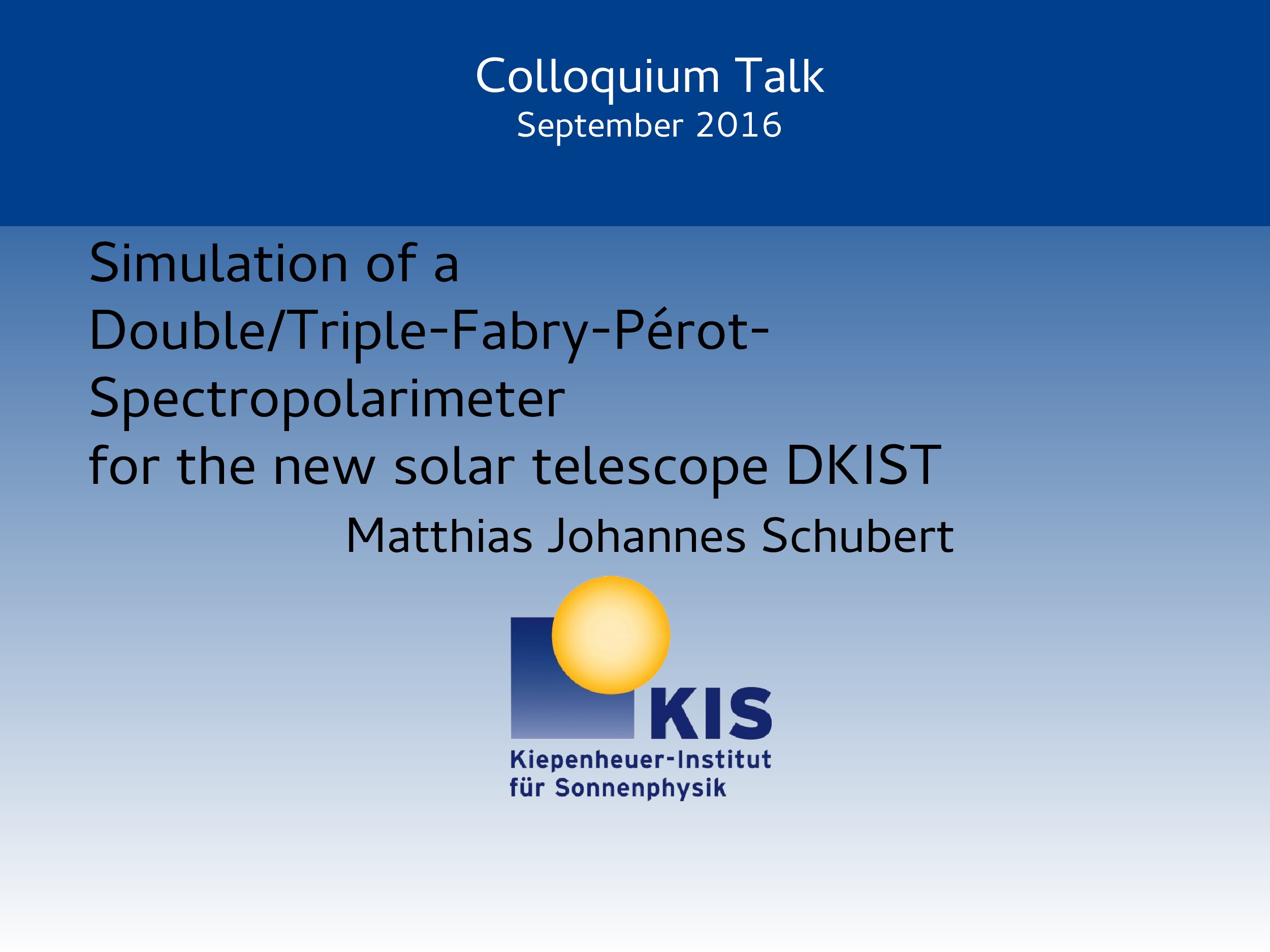Simulation of a Double/Triple-Fabry-Pérot-Spectropolarimeter for the new solar telescope DKIST
Affiliation
Kiepeneheuer-Institute for Solar Physics
Main category
Natural Sciences (Astrophysics and Astrononmy)
Abstract
Context:
Our Sun is an unique high-energy plasma physics laboratory, which can be
studied with exceptional spatial and temporal resolution. Using dedicated telescopes, it
is possible to verify and enhance our knowledge about aspects of modern physics unaccessible
to any experiments on earth. State of the art magneto-hydrodynamic simulations
of the solar photosphere have a spatial resolution of 6km at a wavelength $\lambda$ = 500nm
and model the dynamics of solar pores, sunspots and coronal mass ejections. The theoretical
models have to be evaluated in different atmospheric heights with highly resolving
spectro-polarimetric observations. Therefore, the international solar community started
to build a 4 m-class telescope. Furthermore an imaging spectro-polarimeter for visible
light is developed. This is an unique tool to access highly dynamical, small scale processes
on the solar photosphere and chromosphere for ground breaking scientific research.
Method:
Since a similar, yet smaller instrument is operated at the Vacuum-Tower-
Telescope on the Canarian Island Tenerife, it was used as a test bed to characterize
realistic instrumental induced errors. This defined the relevant parameters of the filter
instrument for scientific research which were modelled: the etalons surface micro roughness,
a varying reflectivity, plate figure errors, the photon noise, the relative aperture
and the distance of the individual etalons to a defined focal plane of the telescope. Micro
roughness, reflectivity and plate figure errors will shift and broaden the observed line
profiles. Thus an instrumental error is induced in calculated Doppler velocity and full
width half maximum maps of the solar surface. Additionally, the magnetic measurement
sensitivity is limited by noise . Therefore, simulated observations of the quiet Sun were
performed for two instrument configurations to study their measurement capabilities.
One instrument is simulated with three etalons and a spectral bandwidth of $\delta\ambda$ = 3.8pm
and the other with two etalons and $\delta\ambda$ = 6.1pm (spectral bandwidth is given for wavelength
$\lambda$=630 nm). To study the effect of a defocused mounting of the etalons on the
optical axis, the simulations were carried out for the instruments theoretical in a focal
plane and at specified distances.
Further reading
Thesis: 'Entwicklung und Charakterisierung von Instrumenten zur hochauflösenden Spektropolarimetrie'
Language: german
DOI: 10.6094/UNIFR/11040
(FreiDok University Freiburg)
Do you have problems viewing the pdf-file? Download presentation
here
If the presentation contains inappropriate content, please
report the presentation. You will be redirected to the landing page.
